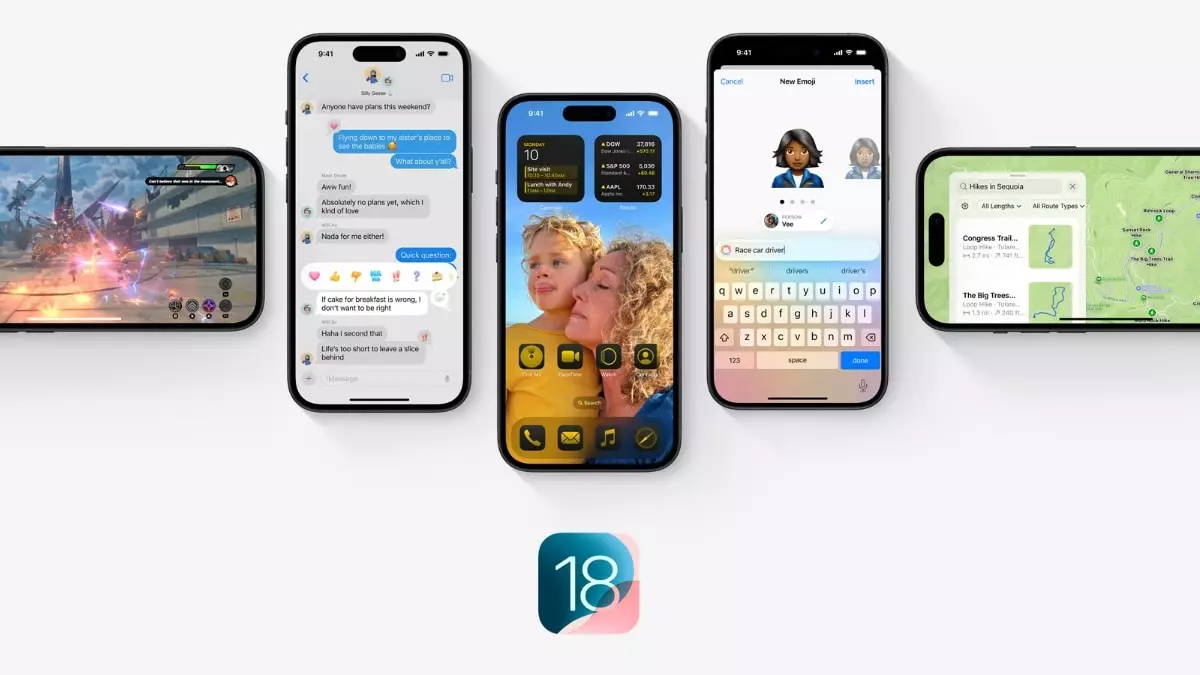Apple’s annual event, dubbed ‘It’s Glowtime’, unveiled the much-anticipated iPhone 16 lineup on September 9. This year’s series includes the base iPhone 16, the larger iPhone 16 Plus, the feature-rich iPhone 16 Pro, and the luxurious iPhone 16 Pro Max. As the tech community eagerly awaits the launch of these devices, which are set for public release on September 20, the accompanying iOS 18 update is creating its own buzz. With this update, Apple aims to enhance user experience significantly, offering a wealth of customization options and features that promise to redefine how iPhone users interact with their devices.
At the heart of the iPhone 16’s appeal lies the new iOS 18, which prioritizes user control and personalization. Apple’s approach to customization has always been relatively conservative compared to its competitors, but the updates in iOS 18 indicate a significant shift. Users can expect to change the tint and color of app icons, rearrange their home screens with fluidity, and tailor widgets to fit their aesthetic preferences. This proactive adjustment toward personalization reflects Apple’s understanding of its user base’s desire for individuality in a streamlined interface—a stark contrast from the uniformity that was a hallmark of earlier iOS versions.
Nevertheless, a notable caveat with this release is that some of the most compelling features, including the much-touted Apple Intelligence that incorporates generative AI and a revamped Siri, will be rolled out in a subsequent update. This delay signifies Apple’s meticulous approach to ensuring that their flagship features are polished before reaching consumers. Still, the promise of AI advancements integrated within the ecosystem raises anticipation for how users will eventually interact with their devices.
For users eager to experience iOS 18, the global rollout is set to begin on September 16, a date that has been communicated clearly by Apple. While the specific rollout time remains under wraps, prior major updates have usually launched at 10 AM PT, suggesting that all eyes will be on the clock as the date approaches. A broad array of older iPhone models, including the iPhone SE (both generations), iPhone XR, and newer models, qualifies for this update. This inclusivity illustrates Apple’s commitment to supporting its existing user base rather than solely focusing on selling new devices—a strategy that has historically garnered goodwill among customers.
Beyond mere customization, the iOS 18 update introduces significant enhancements across various core applications. The Control Center sees a substantial redesign, allowing for a more intuitive user experience, where essential controls can be accessed with a simple swipe. Users can anticipate a refined layout that not only improves accessibility but also enhances personal control over what settings they wish to prioritize.
Significant upgrades to the Photos app also facilitate better organization and accessibility, promising users a streamlined method to locate their multimedia content quickly. Likewise, the Messages app receives an infusion of creativity, with new animated effects and RCS messaging support—features that highlight Apple’s efforts to compete more robustly with other messaging platforms.
While Apple’s introduction of the iPhone 16 and iOS 18 showcases some exciting advancements, a critical analysis reveals that many of these changes might be considered iterative rather than revolutionary. The customization options, while a leap from previous limitations, still operate within a framework that Apple has established over the years. The delayed introduction of flagship features tied to Apple Intelligence raises questions about the company’s strategy; will users wait patiently, or could this become a stumbling block for those eager to experience cutting-edge technology?
Moreover, as digital privacy and security remain pivotal in consumer priorities, Apple must ensure that the introduced features align with its long-standing commitment to safeguarding user data. The balance between innovation and privacy will be crucial in maintaining user trust as the iPhone adopts more sophisticated functionalities.
The iPhone 16 lineup and iOS 18 present a compelling offering from Apple, characterized by incremental yet impactful changes aimed at enhancing user experience. As the devices hit the shelves, users will undoubtedly share their experiences, shaping the narrative surrounding this eagerly awaited release.


Leave a Reply